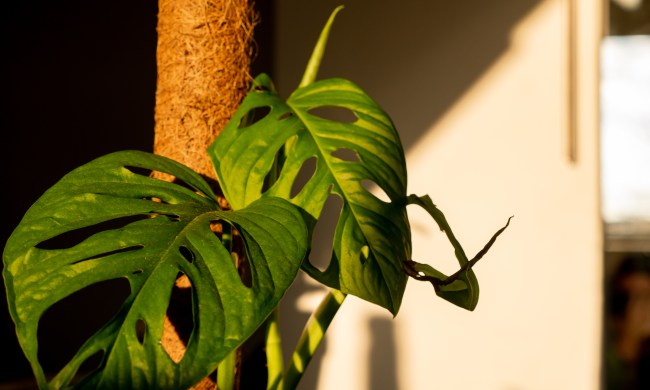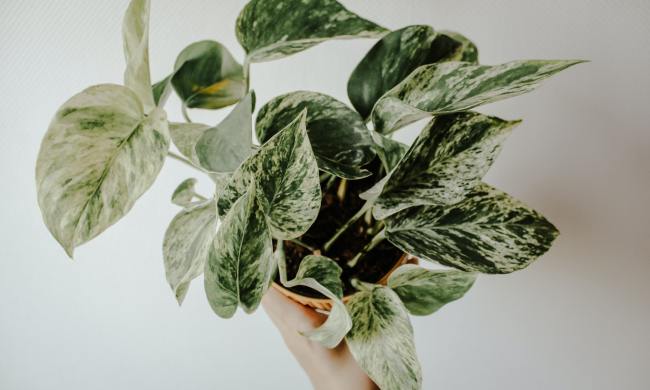Fiddle-leaf figs are popular houseplants, but they aren’t perfect. They can be tricky to care for, especially for beginners. If you’re on the lookout for a new plant to add to your collection, or you’re a beginner looking for the perfect plant to start with, then may we introduce you to the ficus Audrey?
This close relative of the fiddle-leaf fig is an excellent plant, and it’s skyrocketing in popularity. Wondering what it is, why it’s better than the fiddle-leaf fig, and how you can grow your own? We’ll answer all your questions in this simple guide to ficus Audrey care.
What is a ficus Audrey?

Ficus Audrey is a variety of Ficus benghalensis, or banyan tree. This is the national tree of India, and they’re remarkably easy to care for. Ficus Audrey resembles its cousin, the fiddle-leaf fig, but it typically has smaller leaves that are slightly more oval in shape and a bit less glossy. If you didn’t know you were looking at a different plant, you might not notice the differences at all.
However, the main reason that ficus Audrey trees are becoming more popular than the fiddle-leaf fig trees is their care requirements. Where fiddle-leaf fig trees are finicky and sometimes struggle to thrive indoors, ficus Audrey trees are well suited to indoor living and are much more relaxed and forgiving. So if you’re a beginner, or someone who’s had difficulties with growing fiddle-leaf figs in the past, then ficus Audrey trees are an excellent alternative.
Planting your ficus Audrey

Ficus Audrey plants enjoy light, well-draining, and rich aerated soil. Many gardeners find success with a cactus potting mix, but you can also use a standard potting soil that has been amended with perlite and compost. Both perlite and compost will improve drainage and water retention. Perlite also helps with aeration, and compost improves the nutrient quality of the soil. As with other houseplants, be sure the container has drainage holes.
As you might guess from hearing that it’s the national tree of India, these plants are tropical. They love heat and humidity, making them better houseplants than outdoor plants in most parts of the U.S. Your ficus Audrey can grow outdoors in USDA zones 9 to 11, and you can take it outdoors in warm weather elsewhere. However, it should stay indoors during fall and winter and positioned away from drafts or air vents.
Unlike the fiddle-leaf fig, ficus Audrey does best in bright, indirect light, but it’s not terribly picky. Although it can suffer from too much shade or too much direct sun, ficus Audrey is more tolerant of varied light than its cousin. This, combined with its love of humidity, makes ficus Audrey an excellent bathroom plant.
Ficus Audrey care

A Ficus Audrey tree should be watered whenever the top few inches of soil are dry. Letting the soil dry slightly ensures you won’t overwater it, but avoid letting the soil dry completely. If the soil is dry for too long, your ficus Audrey may lose a few leaves. The good news is that they will regrow if you begin watering it again, so don’t panic. On average, you should be watering your ficus Audrey tree every week to week and a half. The exact timing can vary based on the temperature, humidity, and lighting around your plant.
During spring and summer, you can feed your ficus Audrey with a balanced houseplant fertilizer. We recommend incorporating a liquid fertilizer into your watering routine, as this is easier for most gardeners than mixing granular fertilizer into the potting soil around your ficus Audrey plant’s roots. However, you don’t need to fertilize during every watering. These plants are not heavy feeders, and overfertilization can do more harm than good.
Ficus Audrey has a moderate growth rate — not too fast and not too slow. They need to be repotted every two years (although plants that are being fertilized regularly may need more frequent repotting) in a slightly larger pot with fresh soil. You can control their size and shape by pruning in winter. Use sharp, clean shears, scissors, or a knife to remove damaged branches, and clip longer branches to a more manageable size.
Ficus Audrey is a lovely houseplant, perfect for anyone who wants a fiddle-leaf fig without as much hassle. Now that you know how to take care of one, you’re ready to add a ficus Audrey to your houseplant collection — or use it to start your collection, if you’re just starting out. Whether you’re a beginner or an expert, you’ll love this excellent houseplant.




